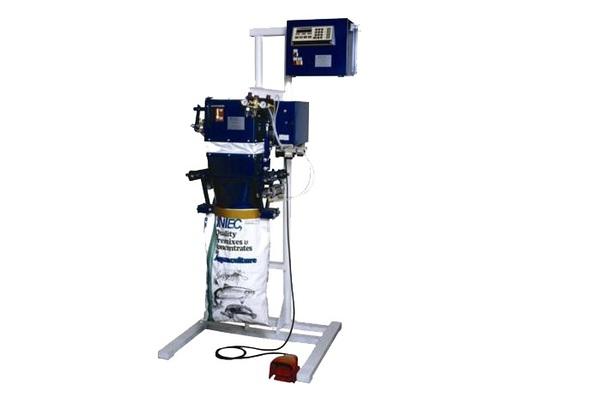
Flaking Process. Josef Barbi (E.S.E. & Intec)

Dear Mr Diaz; when you say that flaking process has the greatest effect to improving starch digestion, I understand that this is one of the most economical process to do that, because we know that extrusion process with or whitout conditioning process you can get the best value of gelatinization over 90%....I dont know flaking process getting that gelatinization level...the problem is that with extrusion of corn starch is not economical for feeding cow...
Interesting video about flaking process.
This is my little contribution to this forum:
The digestion and utilization of starch in the ruminant is amazingly complex, primarily because there are so many factors that play a role in the process. As discussed previously the processing of the grain plays a significant role in how the starch within the grain is presented to the rumen bacteria and how it is either broken down at this point or is passed on for further digestion in the lower digestive tract. This processing also directly affects how the starch particles and compositional molecules are also presented to the digestive process.
Remember for a moment why the availability of starch is important in the ruminant animal, be it a dairy cow, a growing calf, a range cow or a feedlot steer. Starch provides for the animal a substrate for two major processes.
1) As starch is broken down by the rumen bacteria, organic acids such as acetic and propionic acid are produced. While these two acids have different functions in the body and higher concentrations of one may be preferential over the other depending on the type of animal (i.e. a dairy cow vs. a feedlot steer) these acids are precursors for important metabolic pathways. Acetic acid enters a pathway by which fatty acids are produced while propionic enters that path which results in the production of glucose in the liver and is subsequently used for energy by the animal. Acetic acid can also be used for this process but it is a more indirect process and less efficient.
2) As the starch particles and submolecules are broken down the result is a supply of carbon skeletons which are available to the bacterial population. The microbes can combine these carbon chains with nitrogen (ammonia) cleaved from intake protein to form protein of their own (microbial protein). This protein makes up the majority of the protein available to the animal as the bacteria are passed down the digestive tract.
As you can see based on this information, starch availability and digestion is required for two very major roles, i.e. energy and protein production.
The starch in corn is found in two main forms -- amylose and amylopectin. Both of these molecules are made up of chains of glucose molecules bound together in beta 1-4 linkages. In other words one glucose molecule is bound at it's No. 1 carbon to the No. 4 carbon of the next and so on. Amylose is basically a straight chain of these glucose molecules while amylopectin has many branches in the chain. The entire starch granule is made up of clusters of these molecules. Amylopectin is more digestible than amylose because of its branched chain configuration. This simply provides more access points for starch digesting enzymes. Normal corn contains approximately 25 percent amylose and 75 percent amylopectin. Research has shown that these numbers can be altered and the amylopectin concentration can be increased through bioengineering. Obviously though this opens up a whole new can of worms.
It would appear at this point that the greatest effect on improving starch digestion in the rumen occurs when it is processed through a method such as steam flaking. Steam flaking subjects the grain to high temperatures and moisture in the steam cabinet. This allows the heat and moisture to enter the starch matrix of the individual kernel. Mechanical pressure is then applied which, when combined with the previous effect causes the starch to expand and disrupt. The term applied to this process is referred to as gelatinization. When exposed to water starch granule swell although without the applied heat the change may not be noticeable. Heating breaks the intermolecular bonds to allow significant swelling. This swelling of the starch-water mixture then becomes translucent and forms a “gel” as it cools and intermolecular bonds are allowed to reform. Because the amylopectin molecules are branched, they interfere with themselves and cannot reform into a tight, firm structure, therefore leaving the starch matrix more open and susceptible to microbial and enzymatic activity. The degree of gelatinization is typically considered an indicative measure of the improved digestibility of the starch. Gelatinization values of 50 to 68 percent and higher are commonly observed in operations such as feed-yards which feed the flaked grain within hours of it's production.
As Mr. Barbi mentioned, there are several process parameters to be achieved in the process to obtein the best results on the steam cereal flaking process:
- Cleaning; to remove foreign materials.
- Treatment; some processors used to use surfactants or even water to treat the cereal grains prior the conditioning step.
- Steam conditioning, refers to the injection of live steam into the steam chest reaching temperatures around 210-220ºF @ 100 PSIG on the piping line (manifold or distributor) with a retention time about 45-60 minutes depending of the desired cooking degree.
- Flaking; by using a flaking mill to produce flakes at about 0.015"-0.018" thickness. Roll speed could be configured to achieve 450-480 RPM.
- Drying/Cooling; this is only required if the finished product will be stored more than 48-72 hours after production, if the flakes will be offered to the cattle immmediately after process dryer or coolers are not required.
- Steam generation; a simply rule to follow in order to size a proper steam boiler will be 12 BHP per ton produced and taking in consideration 80-85% effciency on the boiler.
Thank you.
Enrique Díaz, P.E.
Sales/Service Process Engineer
R&D Equipment Company
Fort Worth, TX
F


BAGGING SCALES & SYSTEMS
I really appreciate your work I am an Engr am into machine production here in Nigeria, my question is that is it under most that extruder must have heating devices?
I read one of your writeup, can you explain what is the meaning of the following:
1) Land height of a die, short land and longer land of a die
2) Dextrin. molecules
3) Gelatonizable protein
Note: I need a professional explanation, sir.







.jpg&w=3840&q=75)


